DROPS Paris
Fun and easy to knit cotton!
from:
128RUB
per 50 g
Content: 100% Cotton
Yarn Group:
C (16 - 19 stitches)
/ 10 ply / aran / worsted
Weight/length: 50 g = approx 75 m
Recommended needle size: 5 mm
Knitting tension: 10 x 10 cm = 17 sts x 22 rows
Care: Machine wash 60°C / Dry Flat
Made in: EU
Raw material origin: Cotton from Pakistan
This yarn has an Oeko-Tex® certification (certificate number 09.HBG.68250), Standard 100, Class I from the Hohenstein Institute. This means that is has been tested for harmful substances and is considered safe in human-ecological terms. Class I is the highest level, and it means the yarn is suitable for baby articles (ages 0-3).
DROPS Paris is spun from multiple thin strands of pure cotton - a fiber that breathes and has a high absorbency - which makes garments made in this yarn cool, and yet warm.
Soft to the touch and with a delicate rustic feel, this yarn is available in two different types; DROPS Paris uni colour, made from 100% combed cotton and DROPS Paris recycled denim, made from 100% recycled cotton.
In both cases, this is a yarn that works up fast and easy, and it’s a great choice for beginners and for interior projects like potholders, dish cloths, towels and baby bibs; being especially good for people with sensitive skin, since it does not itch or irritate.
Read more about our products' sustainability here
Please be aware that the colours shown may vary from screen to screen in the same way that shades may vary slightly from dye lot to dye lot.
Here are some guidelines to wash your garment in DROPS Paris, but please note that cotton has the tendency to shrink in the wash, so make sure you measure the garment before washing, in order to shape it correctly after the wash:
While DROPS Paris uni colour shades can be washed at 60 degrees, recycled denim colours are more delicate and should not be washed at more than 40 degrees, to avoid shrinking.
- Machine wash - separately - using a gentle cycle program at 40ºC or 60ºC depending on the instructions on the label. Only use detergent without enzymes or optical brighteners.
- NEVER leave the garment to soak/wet in the washing machine for a long period of time.
- To dry the garment, shape it and lay it flat - do not hang - ideally on a warm bathroom floor or on top of a drying rack in a room with good air circulation. Never dry the garment in direct sunlight.
- Can be tumble dried.
- Unevenness in the garment will even out after washing or light steam ironing.
- Never iron the garment directly. Use always a damp cloth between your steaming iron or regular iron and the garment.
Note: If you are washing a project made with this yarn combined with another, the general guideline is to follow the washing instructions for the most delicate of the yarns you are working with.
Do you have a question about this yarn?
See a list of frequently asked questions (FAQ) about our yarns.
1) What type of fibers make the DROPS yarns?
Yarn can be made from a large number of natural and synthetic fibers. DROPS carries mainly yarns made from wool, cotton, alpaca, linen, mohair and silk. Each fiber type has its own qualities, and they are often mixed to take advantage of the best properties of each one. Coarse yarn has the advantage of being stronger and more durable, and finer fibers offer more softness and comfort. Here a bit about the main fibers we carry:
Alpaca:
Alpaca fleece is the natural fiber harvested from an alpaca, and it is similar in structure to sheep wool fiber. Its softness comes from the small diameter of the fiber, similar to merino wool. It is a soft, durable, luxurious and silky natural fiber. Yarn made from alpaca fibers does not felt or pill easily, and it can be light or heavy in weight, depending on how it is spun. While similar to sheep’s wool, it is warmer, not prickly, and has no lanolin, which makes it hypoallergenic. Alpacas come in 22 natural colors, with more than 300 shades from a true-blue black through browns-black, browns, white, silver and rose-greys.
Mohair:
This fiber comes from the Angora goats, and it's considered a luxury fiber. Mohair yarn is warm as wool, but much lighter in weight; it is durable, dyes well and does not felt easily. Mohair fibers have also a distinctive luster created by the way they reflect light. Despite being a hard fiber, mohair is usually spun into a very fluffy yarn, resulting in airy and lustrous garments.
Wool:
The wool fibers come from the skin of sheep and are relatively coarse fibers. Two striking characteristics of wool are its susceptibility to heat and its felting property, which is caused by the scales on the surface. Depending upon the breed of sheep, the appearance of the wool varies.
Wool from Merino sheep is considered the finest type of wool, having as characteristics that is finely crimped and soft. All the Merino wool in the DROPS yarns has its origins in South America, coming from sheep that have not been subject to Mulesing.
Pure new wool is wool made directly from animal fleece, and not recycled from existing wool garments.
Machine washable wool is wool treated chemically to minimize the outer fuzzy layer of the fibers, and be therefore fitable for machine wash (see Superwash).
Silk:
The silk fiber is a fine continuous fiber produced from the cocoon of a moth caterpillar known as the silkworm. While silkworm is cultivated, the wild or tussah silk is obtained from uncultivated silkworm cocoons. Silk fiber is one of the strongest natural fibers and makes a wonderful knitting yarn. It blends really well with other fibers, especially wool. Silk also dyes beautifully with natural dyes.
Vegetable fibers:
There are several varieties of vegetable fibers, found in the cell walls of plants or vegetables. Of all the varieties, two are recognized as major knitted or textile fibers. They are cotton and linen.
Cotton is the fiber surrounding the seeds in a cotton pod, and it is almost pure cellulose. Cotton is usually white in color but there are green and brown varieties as well. The cotton fiber is most often spun into yarn or thread and used to make a soft, breathable textile that is good for summer clothing and accessories, making a weaker yarn than silk or linen but stronger than wool.
Mercerized cotton is cotton that has been through a mercerization treatment. This treatment gives cotton fabrics and threads a lustrous yarn that is more lustrous than conventional cotton. It is also stronger, takes dye a little more readily, makes the yarn more resistant to mildew and reduces lint. It also may not shrink or lose its shape as much as "regular" cotton.
Linen is a fiber derived from the stalk of the flax plant that is durable and stronger than any other fiber. The linen fiber is relatively soft, straight and lustrous and becomes more beautiful with age. Linen is more comfortable to wear in hot temperatures than cotton, due to the fact that it absorbs moisture better and dries more quickly.
Other materials used in our yarns include synthetic fibers such as acrylic, viscose, polyamide (nylon) and polyester. These fibers are used mostly to give strength to a yarn (like our sock yarn, DROPS Fabel) or a special kind of structure (like our blown yarn, DROPS Air).
The polyamide fibre, commonly known as nylon, is very strong, durable, lightweight, easy to care for (can be machine washed and dried), and elastic, which makes it perfect for blending with other fibres to produce hard-wearing yarns like sock yarn.
Compared to polyester, polyamide is softer and more flexible, but it also absorbs more water and dries slower.
3) What type of information can I find on the DROPS yarn labels?
All DROPS yarn labels include information about fiber content (wool, cotton, etc.), weight in grams and ounces, length in meters and yards, washing instructions and symbols (explained here), color number, dye lot number and yarn group information.
4) What are the DROPS yarn groups?
All DROPS yarns are classified into 6 different thickness groups (A to F). Yarns in a same group have similar knitting tension/gauge, and can therefore be interchanged in patterns; however the length may be different, so when substituting always calculate the amount of meters/yards needed for the pattern to know the amount of yarn you need to get.
5) Can I use a different yarn than the one mentioned in the pattern?
Yes, as long as the yarn can be worked in the same knitting tension/gauge. Always swatch to make sure you get the same number of stitches in width and rows in height as given in the pattern.
Remember that different yarns with different textures, will give the garment different looks. The yardage/length may also be different, so when substituting always calculate the number of yards needed, in order to know the amount of yarn you need.
Read more about how to calculate the amount of an alternative yarn - and how to replace 1 thread of a yarn with 2 or more of another, here.
6) What does it mean when a yarn is “Superwash”?
A superwash wool is a special wool product that has been treated or processed in a way that allows it to be machine washable. Many people are afraid to work with wool because it is so easy to shrink (though some shrink wool on purpose) and superwash wool can allow them to work with great fibers without worry. (Read more here).
7) What does “Oeko-Tex® certified” means?
The Oeko-Tex® Standard 100 was introduced at the beginning of the 1990s as a response to the needs of the general public for textiles which posed no risk to health. The Oeko-Tex® Standard 100 is a globally uniform testing and certification system for textile raw materials, intermediate and end products at all stages of production. The test for harmful substances comprise substances which are prohibited or regulated by law, chemicals which are known to be harmful to health, and parameters which are included as a precautionary measure to safeguard health.
For more info go to www.oeko-tex.com
10) How accurate are the colours on the shade cards online?
When obtaining images for the shade card, we do our best to achieve the highest level of color accuracy. Unfortunately, we cannot guarantee how images will appear on your computer screen. Every monitor displays color differently, some colors might look darker than they really are, and some colors might be more saturated on some screens. If you experience that many of the yarn colors looks different on your screen than the actual color of the skeins, you can adjust the setting on your monitor.
11) What is a micron? What does super fine / extra fine mean?
The fineness of yarn fibers is measured in microns (thousands of millimeters). Super fine alpaca wool is 26-28 microns. Fine merino wool is less than 21.5 microns and extra fine merino is under 19.5 microns. The less microns the softer and more delicate a quality can be, the more microns the more hard wear the quality will be.
The reason why the microns in a yarn’s fibers are important is that the yarn will eventually become something else, and how delicate or coarse a yarn is will determine in part what we use it for. That’s why we recommend the softest yarns (like DROPS Baby Merino) for baby clothing, or why we choose to use a more hard wear yarn like DROPS Snow, for a seating pad or slipper.
12) Why are the colours in my skeins of print yarn different?
The reason why two skeins of a same print yarn look different can be 1) that both skeins are part of different dye lots; 2) that the skeins have been dyed using a technique called "magic print" (the one used for example in DROPS Delight), which provides unique patterns and smooth colour transitions to each skein, meaning also that within one dye lot, lighter or darker varieties might appear. This is no fault or defect, but part of the yarn's character.
13) My store doesn’t have the colour I want, what can I do?
If your DROPS store doesn’t have the yarn colour you want, try contacting a DROPS Super Store (the ones with the golden badges) - they will make sure to get a hold of the colour even if they don’t have it in stock themselves. See a list of all DROPS stores here.
14) Where can I find a specific dye lot of a colour?
Always try contacting your DROPS store first. If they do not have the dye lot you want we recommend you to ask other knitters and crocheters in the DROPS Workshop in Facebook or Ravelry, which may have the dye lot in their stash and might be willing to part from it.
Yarn sheds because there's not enough twist to hold all of the fibers together. All yarns have excess fibers (from production) that might come off as lint or shedding, in varied degrees that depend on how the yarn is spun. Brushed yarns ("hairier" yarns) like DROPS Melody, have more of these loose fibers than other yarns, and therefore shed more. Shedding also depends on what is worn under or over the garment, and whether this pulls at the yarn fibers. It’s therefore not possible to guarantee that there will be no shedding.
Below are some tips on how to get the best result when working with hairier yarns:
- When the garment is finished (before you wash it) shake it vigorously so the looser hairs come off. NOTE: do NOT use a lint roller, brush or any method that pulls at the yarn.
- Place the garment in a plastic bag and put it in your freezer - the temperature will cause the fibers to become less attached to each other, and excess fibers will come off easier. Leave in the freezer for a few hours before taking it out and shaking it again.
- Wash the garment according to the instructions on the yarn label. Garments worked with hairier yarns usually need to be shaken once dry after washing, so that the hairs rise and any excess fibers can come off.
Pilling is a natural process that happens to even the most exclusive of fibers. It's a natural sign of wear and tear that is hard to avoid, and that is most visible in high friction areas of your garment like a sweater's arms and cuffs.
You can make your garment look as new by removing the pilling, using a fabric comb or a pill/lint remover.
How can I replace this yarn?
If you are looking to replace this yarn with another DROPS yarn, you can use another yarn within the same yarn group, or try our yarn converter!
Other yarns in Yarn Group C
Read more about replacing yarn.Have a problem with the DROPS yarn you purchased?
When you purchase yarn from the shade cards or patterns on our site, you are not buying directly from DROPS but from one of the hundreds of DROPS stores around the world. It is therefore important that you take contact with the DROPS store where you bought the yarn, and that you save the labels of all the skeins you purchased (they are your warranty).
The DROPS store you contact will assist you and escalate the claim if necessary. Find a list of DROPS stores here.
Comments / Questions (327)
![]() Agnes Leggett wrote:
Agnes Leggett wrote:
Hi , I would like to know where the drops paris is made and if it is ethically source ?
07.09.2019 - 09:05DROPS Design answered:
Hi Agnes. DROPS Paris is Made in EU and have Oeko-Tex® certificate (STANDARD 100 by OEKO-TEX® 951032 Hohenstein HTTI). If you google the last sentence, you can read more about it. Best regards DROPS design
16.09.2019 kl. 07:23
![]() Isobel Murdock wrote:
Isobel Murdock wrote:
I’ve been making the ‘Too Much Fun’ blanket in Drops Paris. Having made 11 squares in 8 colours why have I used much more of the two recycled denim shades than of the uni colours. I’ve 5 & 15g left from the denim colours; between 23 & 28g of the 6 uni colours.
25.08.2019 - 18:14DROPS Design answered:
Dear Mrs Murdock, not sure how to answer there, could you please contact your DROPS store? They can have a look and check with you. Happy crocheting!
30.08.2019 kl. 09:55
![]() VASSEUR wrote:
VASSEUR wrote:
Bonjour, je tricote depuis 50 ans et je sais compter. Si au bout de 10 cms j'ai déjà utilisé 2 pelotes, arrivée aux emmanchures à 49 cm (taille L), j'aurai utilisé 10 pelotes. Il en restera 4 pour réaliser le haut du gilet et les manches. Il est évident que cela ne suffira pas. Sachez que c'est la première fois que j'achète de la laine par le biais de votre site, chez Kalidou. Je ne renouvellerai pas car on ne peut pas se fier à vos modèles.
18.08.2019 - 09:25DROPS Design answered:
Bonjour Mme Vasseur, nous n'avons eu à l'heure actuelle aucun retour sur la quantité nécessaire pour ce modèle qui fait partie de l'un de nos plus populaires. N'hésitez pas à demander conseil à Kalidou si besoin, on saura vous aider. Bon tricot!
19.08.2019 kl. 12:25
![]() Carolyn Sanbrook wrote:
Carolyn Sanbrook wrote:
What is equal to drop paris in Australia as I am doing the rainbow dress Thanking you
18.08.2019 - 02:07DROPS Design answered:
Dear Mrs Sanbrook, We are able to provide free patterns thanks to our yarns sold throughout the world. You will therefore understand that we can only recomand you to contact the DROPS Stores shipping worldwide for any further help & assistance. Thank you for your comprehension.
20.08.2019 kl. 09:39
![]() VASSEUR wrote:
VASSEUR wrote:
Bonjour. Oui, c'est le modèle 146-1, un gilet long. Le modèle préconise d'utiliser le coton Bomull-in ou le coton Paris. J'ai choisi le coton Paris. Le 1er a une longueur de fil de 85 m et le coton Paris 75 m. Mais je pense que même si j'avais pris le premier, je n'aurais pas eu assez de fil. Merci de me renseigner.
14.08.2019 - 10:50DROPS Design answered:
Bonjour Mme Vasseur, il est normal que la quantité de fil file très vite au début car on tricote le bas de la veste d'une seule traite, si vous conservez bien la bonne tension tout du long, vous devriez avoir suffisamment de fil. Si toutefois ce n'était pas le cas, n'hésitez pas à nous l'indiquer, l'information serait transmise à nos stylistes. Merci, bon tricot!
15.08.2019 kl. 10:55
![]() VASSEUR wrote:
VASSEUR wrote:
Bonjour ! Merci pour votre réponse. Bien sûr que j'ai respecté tout cela. Je pense au final qu'il me faudrait au moins le double de fil, ce n'est pas normal, vous avez dû faire une erreur. Le problème est que si je recommande du fil, je n'aurai peut-être pas le même bain, et pas le même prix non plus. Bref, un peu dégoûtée.
13.08.2019 - 10:17DROPS Design answered:
Bonjour Mme Vasseur, pouvez-vous nous indiquer le nméro ou le nom du modèle que vous avez réalisé pour que nous puissions faire remonter l'info et faire les vérifications? Merci!
14.08.2019 kl. 09:06
![]() VASSEUR wrote:
VASSEUR wrote:
Bonjour, j'ai acheté 15 pelotes de coton DROPS Paris afin de tricoter un de vos modèles. Pour la taille L, vous préconisez 700 gr. de ce coton, ce qui fait 14 pelotes de 50 gr. Celui-ci mesure 75 m par pelote. J'ai un problème, car au bout de 10 cm de hauteur, j'ai déjà utilisé 2 pelotes. Auriez-vous mal calculé le nombre de pelotes. Une erreur peut-elle survenir dans vos explications ? Merci pour votre réponse. Cordialement. N.VASSEUR
12.08.2019 - 14:37DROPS Design answered:
Bonjour Mme Vasseur, avez-vous fait votre échantillon? Avez-vous bien le bon nombre de mailles et de rangs en largeur pour 10 cm comme pour votre échantillon? Il est important de bien conserver la même tension que celle indiquée pour l'échantillon tout le long du modèle, sinon vous pouvez être amenée à avoir besoin de plus de fils. Pour toute assistance individuelle, n'hésitez pas à contacter votre magasin, même par mail ou téléphone. Bon tricot!
13.08.2019 kl. 08:49
![]() Amanda Mistry wrote:
Amanda Mistry wrote:
Hi there Is Drops Paris yarn E71-3 certified?
02.05.2019 - 16:03DROPS Design answered:
Dear Mrs Mistry, DROPS Paris is Oeko-Tex certified - see certficate number in the Shadecard. For more informations, please contact your DROPS store, even per mail or telephone. Happy knitting!
03.05.2019 kl. 09:07
![]() Annette Dahl wrote:
Annette Dahl wrote:
Jeg har strikket Magic Mountain blusen i Drops Paris bomuldsgarn. Vaskeanvisninger for garnet er 60 grader. Spørgsmål: Pga af de mange lyse og mørke farver i trøjen tænker jeg at farverne kan smitte af første gang den bliver vasket specielt da anvisningen siger 60 grader? Kan man tørretumble for at gøre den lidt mindre? Tak, Annette
01.05.2019 - 12:53DROPS Design answered:
Hej Annette, Der skal altså ikke ske noget med farverne om man følger vaskeanvisningen. Sørg for at vaske separat og skylle til vandet er helt klart, da vil evt overskudsfarve også være helt fjernet og da vil det heller ikke kunne smitte af. Du kan jo prøve at tørrebumble samtidig som du holder øje med den... Held og lykke :)
03.05.2019 kl. 14:48Ana wrote:
I bought this yarn in colors 17 and 39, and I was surprised to find it's full of dust-like impurities on the whole length of the yarn. I tried washing it and only a few of the impurities come off. I'm very disappointed!
28.01.2019 - 02:47DROPS Design answered:
Dear Ana, we are sorry to hear your feedback, please contact the store where you bought the yarn, adding pictures and dyelotnumber. Thank you!
28.01.2019 kl. 13:05Sue Feather wrote:
I looked at the drops Paris video and it shows the yarn wrapped around the outside and unravelling easily. Mine had a loose thread hanging from the middle and it does not unravel freely, every so often I have to unwind manually as it keeps getting caught. What am I doing wrong? Or how can I overcome this?
04.01.2019 - 23:24DROPS Design answered:
Dear Mrs Feather, we are sorry to hear you have some worries with your yarn. Please contact the store, even per mail or telephone. Happy knitting!
07.01.2019 kl. 12:44
![]() Jeanne Reginster wrote:
Jeanne Reginster wrote:
Bonjour, Existe-t-il des gammes de fils que l'on peut acheter pour voir les couleurs en vrai ? Avant de passer commande ? Merci d'avance.
07.10.2018 - 14:54DROPS Design answered:
Bonjour Mme Reginster, vous pouvez aller dans le magasin DROPS le plus proche de chez vous ou bien contacter les différentes boutiques en ligne - cf liste, certains d'entre eux proposent, sous conditions, l'envoi d'échantillons. Bon tricot!
08.10.2018 kl. 10:37
![]() Hilde wrote:
Hilde wrote:
Ik wil graag het Drops rokje nr 115-43 maken. volgens het patroon moet ik daarvoor Karisma wol gebruiken. Ik kan alleen niet tegen wol. Nu vind ik de kleuren Paris katoen erg mooi, maar hiervoor wordt naald 4 aangeraden. Kan ik het rokje met dit garen maken, of is dit niet geschikt? mvg Hilde
04.10.2018 - 14:24DROPS Design answered:
Dag Hilde, Karisma valt in garengroep B, dus voor een alternatief garen kun je het beste een garen kiezen dat ook in deze groep valt. Klik hier voor een overzicht van alle garens in garengroepen.
11.10.2018 kl. 16:42
![]() Hanne Krarup wrote:
Hanne Krarup wrote:
Jeg er lidt nysgerrig på, hvordan processen med at recycle garnet er? Er det gamle cowboybukser? Og hvordan bliver det behandlet så det kan bruges som garn?
23.09.2018 - 14:48DROPS Design answered:
Hej Hanne, det er ikke kun cowboybukser, det kan være andet tøj i bomuld som bliver genbrugt.
30.10.2018 kl. 14:06Mariana Orellano wrote:
Hola, quiisera saber dónde puedo conseguir el hilo en Argentina? Muchas gracias
25.08.2018 - 16:28DROPS Design answered:
Hola Mariana, aquí tienes la lista de tiendas que envían lanas DROPS a todo el mundo, ya que no hay tiendas DROPS en Argentina.
28.08.2018 kl. 20:13
![]() Anna wrote:
Anna wrote:
I tre av fyra nystan av färg nr 7, färgbad 70, har tråden varit skarvad. Är det verkligen något man ska behöva acceptera? I mitt fall betyder det att jag förlorar en hel del garn, eftersom jag inte vill ha hårda och synliga knutar eller trådbyte mitt i ett varv.
19.08.2018 - 21:41DROPS Design answered:
Hej, ibland kan det uppstå fler knutar än vanligt vid produktionen. Vi beklagar att du råkat få flera nystan med knutar. Vi ska kontrollera partiet ifråga.
30.08.2018 kl. 14:15
![]() Maria Giovanna Mugnano wrote:
Maria Giovanna Mugnano wrote:
Chiedo per favore se il cotone drop Paris uncolor bianco ha una gradazione totalmente candida oppure tende al bianco sporco? Grazie
15.04.2018 - 16:31DROPS Design answered:
Buonasera Maria Giovanna, il colore n° 01 di Paris è bianco, altrimenti può scegliere il colore n° 17 che è panna. Buon lavoro!
15.04.2018 kl. 18:16
![]() Krista Hämäläinen wrote:
Krista Hämäläinen wrote:
Drops paris lanka erä 71 väri 16 valkoinen todella kovaa! Miksi valkoinen on nykyisin muihin lankoihin nähden karkeaa ja kovaa? Edelliset oli pehmeitä.
13.04.2018 - 20:19DROPS Design answered:
Hei, Paris-langan valkoinen väri on käsitelty enemmän, jotta siitä saataisiin kokonaan valkoinen.
30.08.2018 kl. 14:21
![]() Beghin wrote:
Beghin wrote:
Bonjour, Pourriez vous m'expliquer la différence entre Drops Paris et Drops You #8 ? Cordialement, Lucie
10.04.2018 - 20:56DROPS Design answered:
Bonjour Lucie, DROPS loves you #8 est un coton classique 8/8 et Paris est filé à partir de multiples fils. Pour toute assistance lors du choix d'un fil,n'hésitez pas à contacter votre magasin DROPS, il pourra vous aider, même par mail ou téléphone. Bon tricot!
12.04.2018 kl. 09:03Mafaz Alhujairy wrote:
Loved loved loved this yarn I knitted a mosaic scarf and a beanie using it very soft and easy to work with. see my pattern in the link above.
28.03.2018 - 13:47
![]() Doris wrote:
Doris wrote:
Habe mir 4 verschiedene Farben von Paris bestellt, in der Farbe natur stricke ich gerade eine Jacke und stelle fest, dass sie beim Stricken unfassbar fusselt, während die anderen Farben das nicht tun, dafür aber im Garn härter sind. Meine Frage: wie bekomme ich das Fusseln in den Griff ? Ich möchte nicht, dass das fertige Kleidungstück an den Hosen Spuren hinterlässt. Hilft Waschen ? Und warum ist die Qualität bei den Farben so unterschiedlich ?
19.02.2018 - 16:38DROPS Design answered:
Liebe Doris, beim waschen sollte es helfen. Ihr DROPS Laden wird auch immer gute Tipps für Sie haben, gerne können Sie Kontakt mit ihnen aufnehmen, auch telefonisch oder per Mail. Viel Spaß beim stricken!
20.02.2018 kl. 09:29
![]() Lisa Diss wrote:
Lisa Diss wrote:
I would like to make the magic mountain sweater. I have noticed that garments made with cotton yarn stretch. How do you find the Drops Paris Yarn for a sweater. Thank you. Lisa
29.01.2018 - 22:45DROPS Design answered:
Dear Mrs Diss, a good idea is always to work first a swatch, wash it and let it dry as you will then do for the garment and adjust needle size if required. Happy knitting!
30.01.2018 kl. 10:07
![]() Barbara wrote:
Barbara wrote:
Ich moechte aus dem Garn Geschirrtuecher und Spuelis stricken, deshalb wuerde ich ein Garn benoetigen, das nicht mercerisiert ist. Ich finde diese Info aber leider nicht. Habt ihr evtl. Alternativen fuer nicht mercerisiertes Garn? Ich moechte euch noch ein ganz dickes Lob mitschicken, fuer die tolle Arbeit, die ihr macht! Ich liebe es, auf eurer Seite zu schmoekern und finde viele Ideen zum Nachmachen. Herzlichen Dank dafuer und liebe Grüße, Barbara
29.01.2018 - 12:03DROPS Design answered:
Liebe Barbara, nur DROPS Muskat ist mercerisiert, alle andere Baumwolle sind nicht. Viel Spaß beim stricken!
30.01.2018 kl. 10:46
![]() Lindsey Ward wrote:
Lindsey Ward wrote:
Recently bought a ball of light purple 05 that was much darker than the swatch on the website. I ordered a further ball of the same colour and it was markedly lighter. Very disappointed at this and the extra cost I incurred. Would be interested to hear your comments about this matter.
09.10.2017 - 16:54DROPS Design answered:
Dear Mrs Ward, Please be aware that the colours shown may vary from screen to screen in the same way that shades may vary slightly from dye lot to dye lot. You can always talk with your DROPS store so that they can help you. Happy knitting!
10.10.2017 kl. 10:04






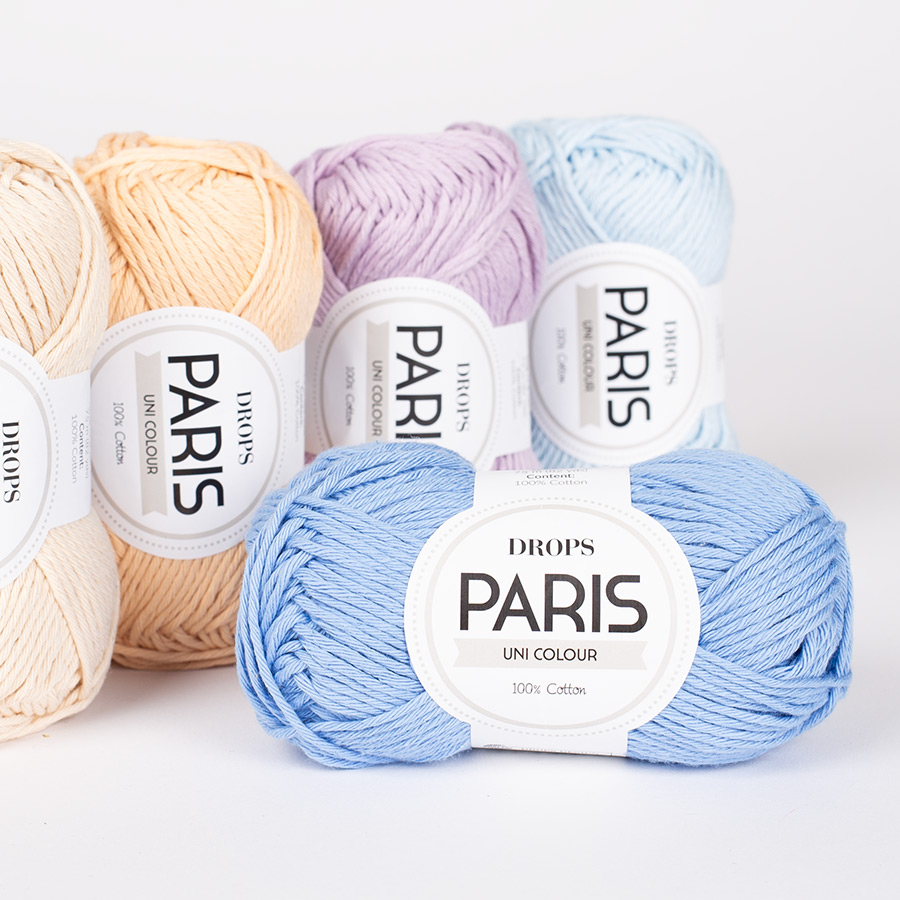
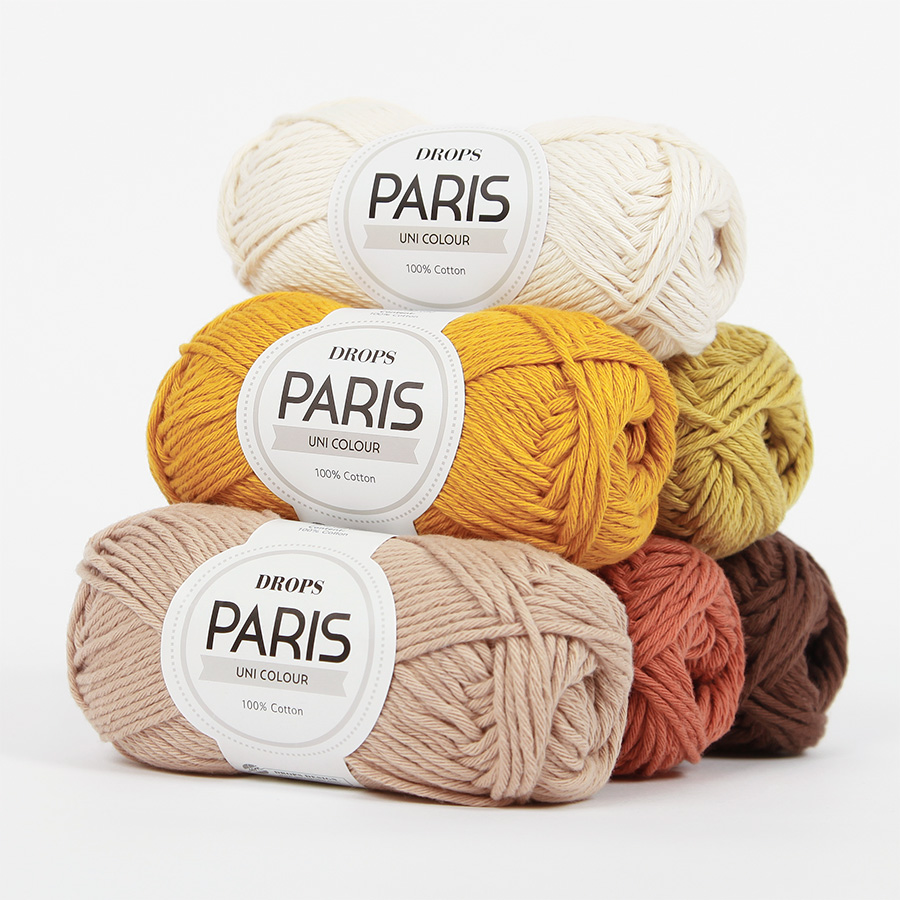
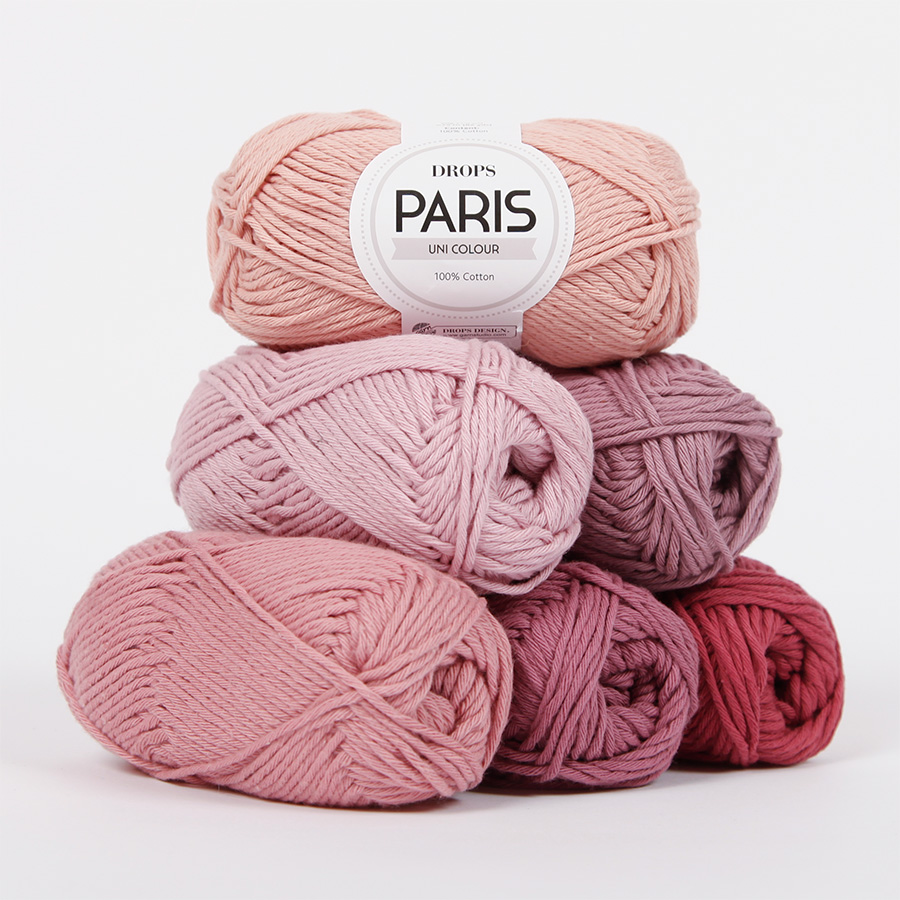
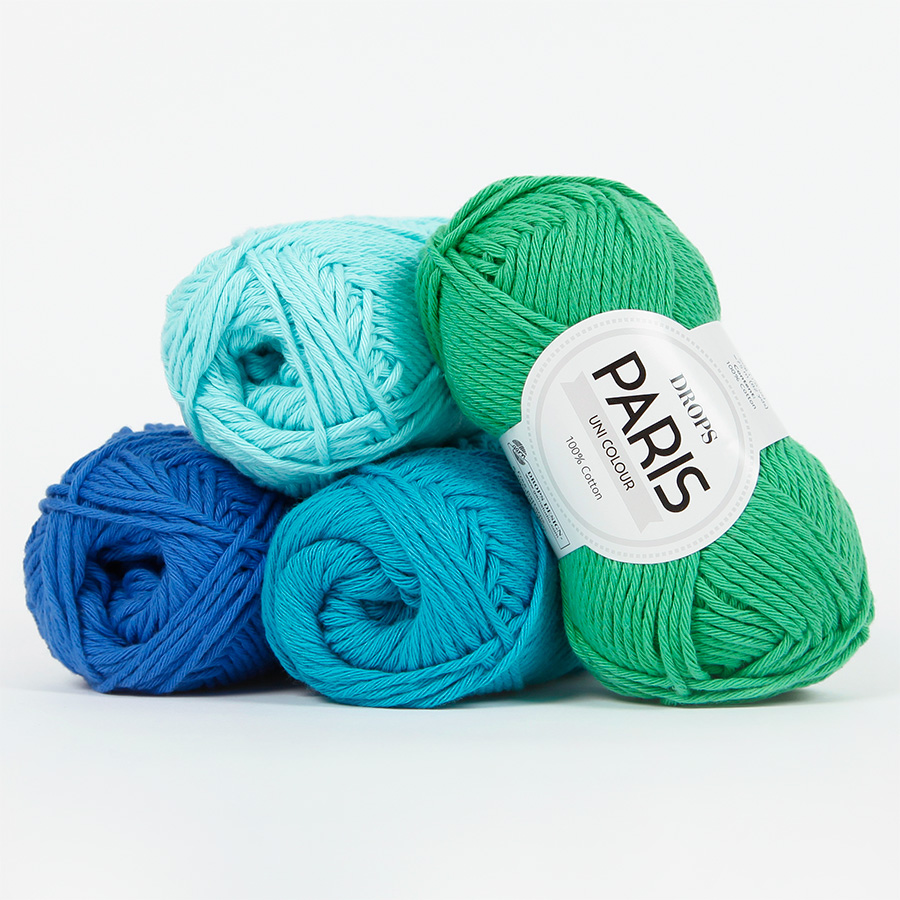
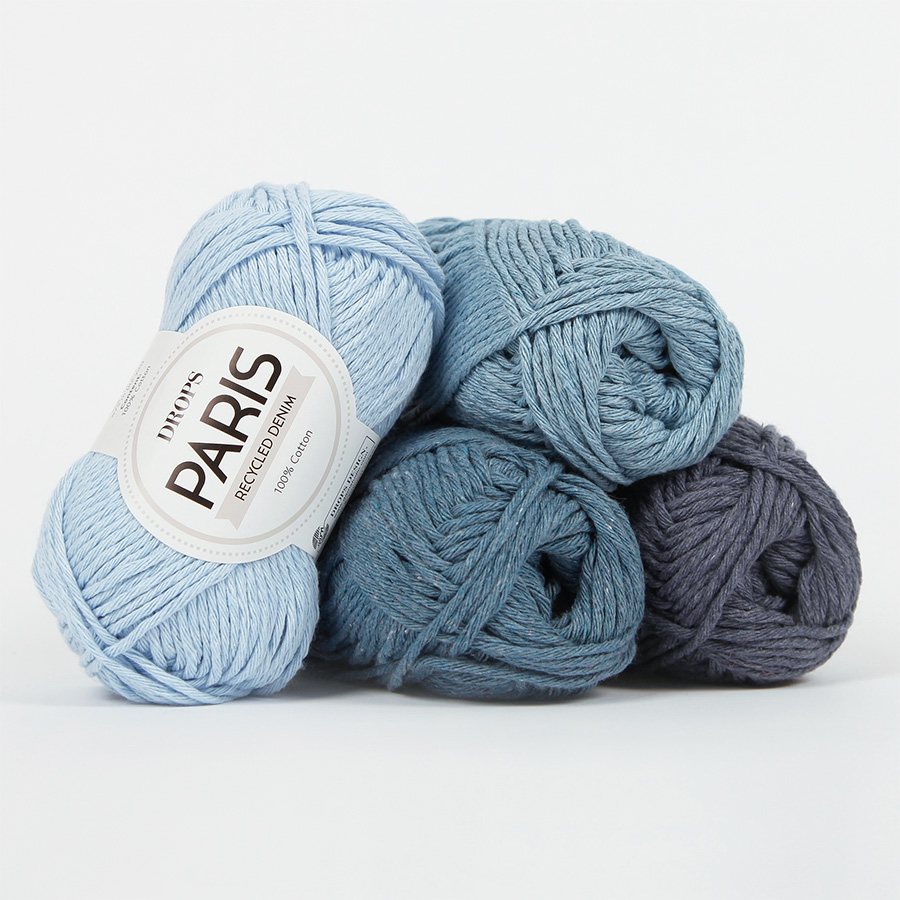
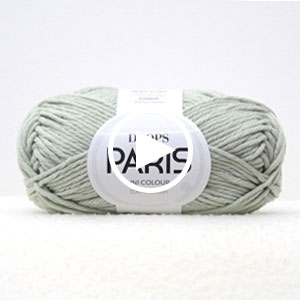











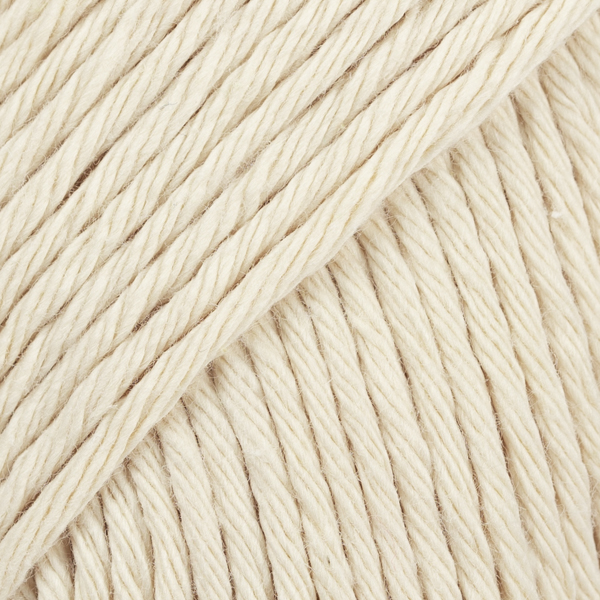


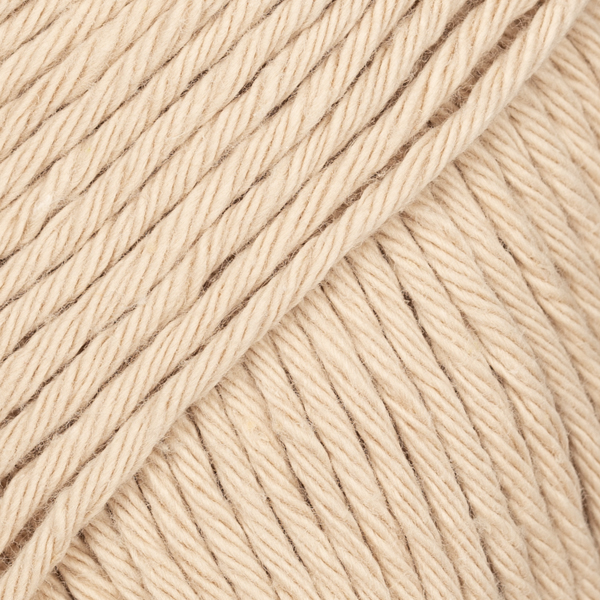
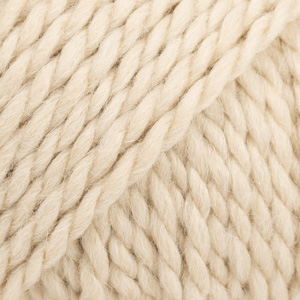











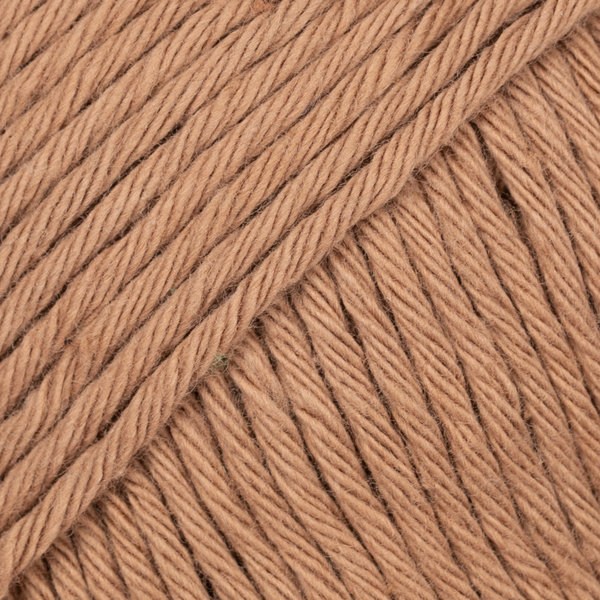



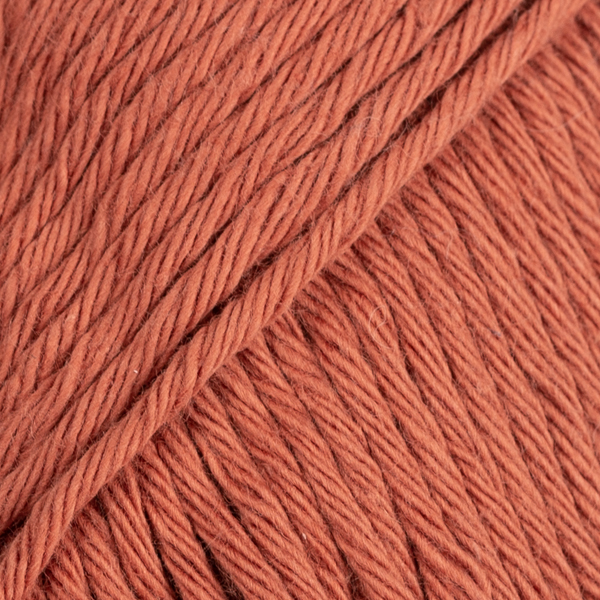




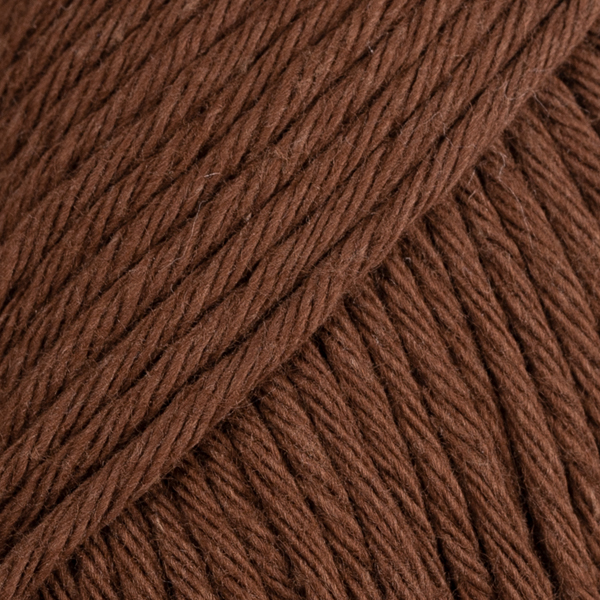






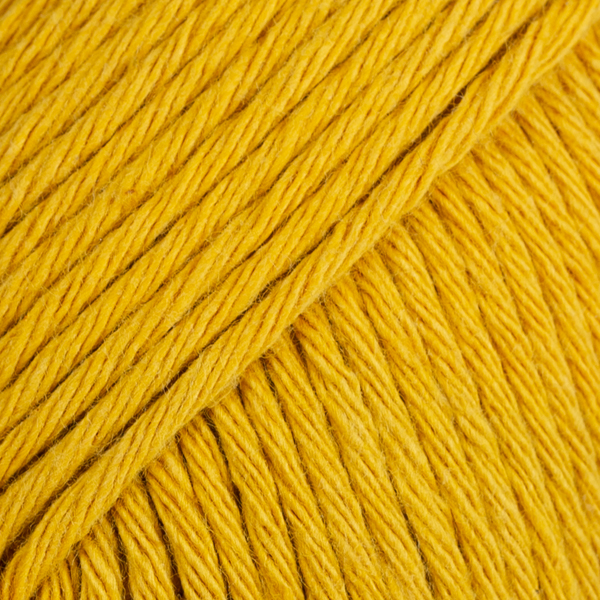



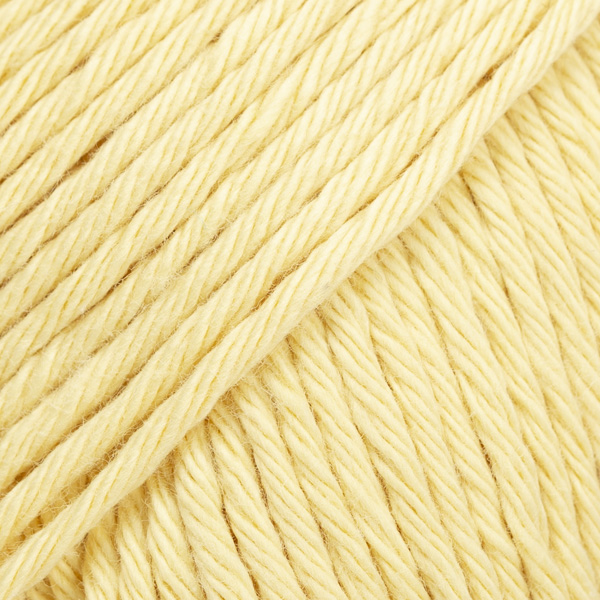


















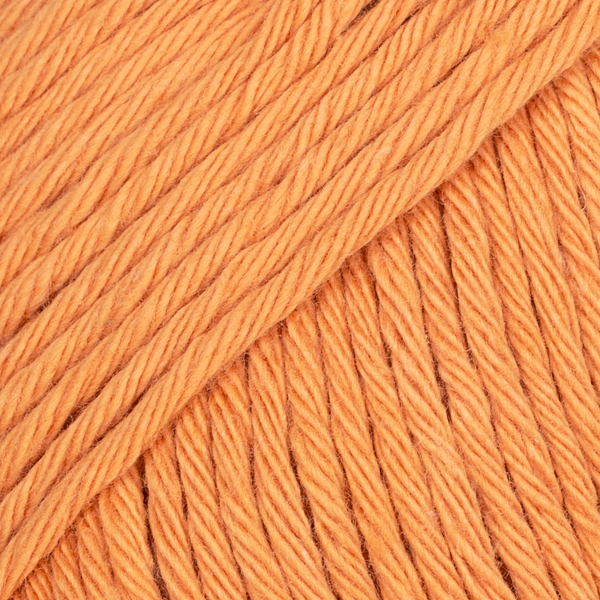





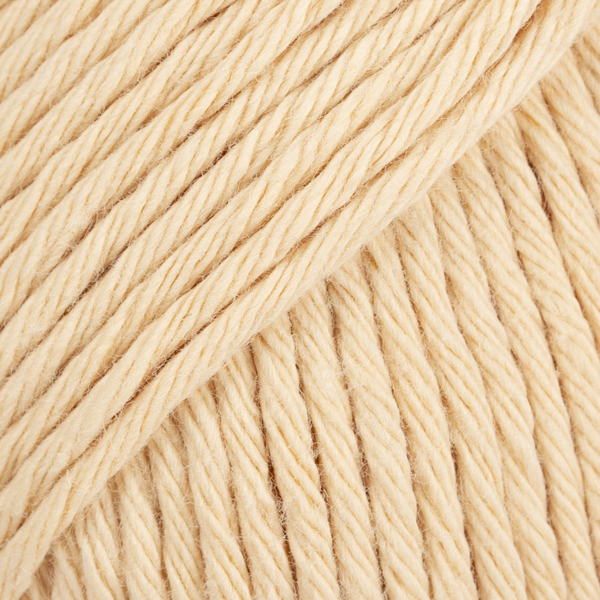







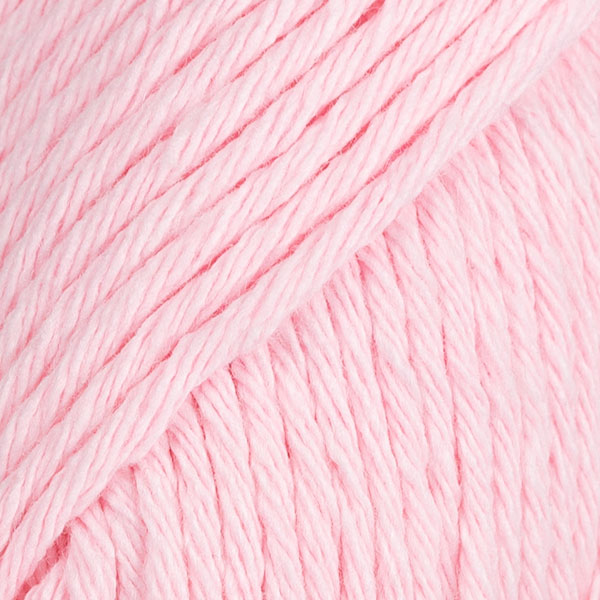




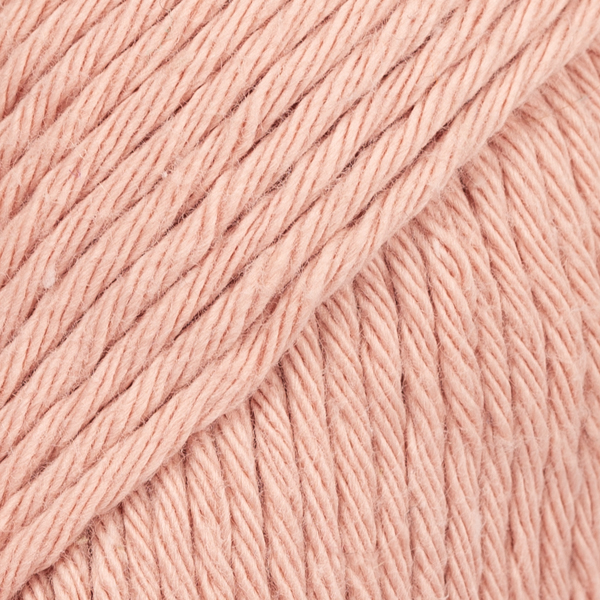



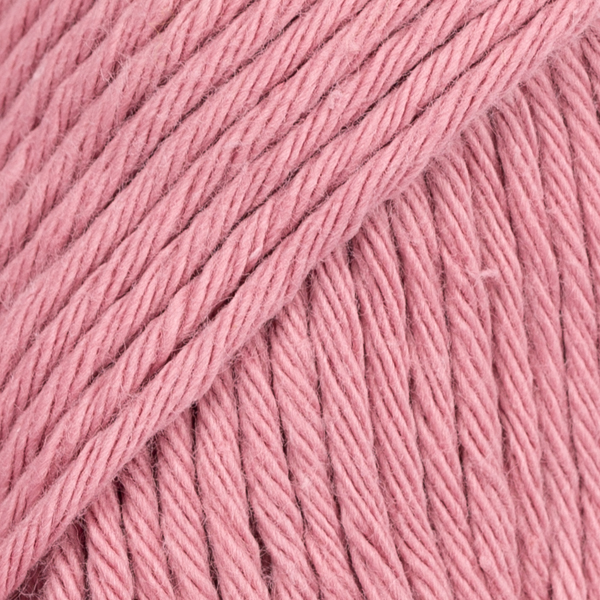















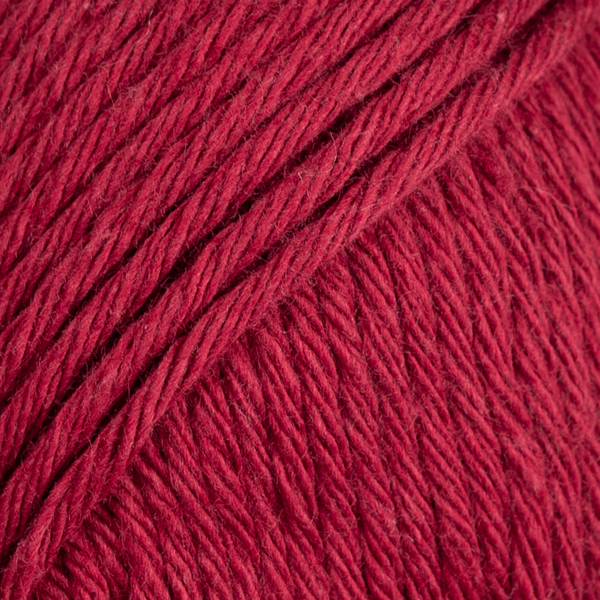

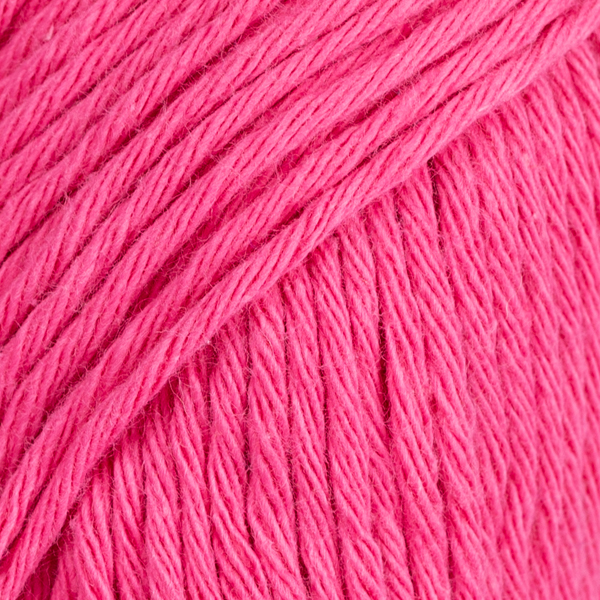









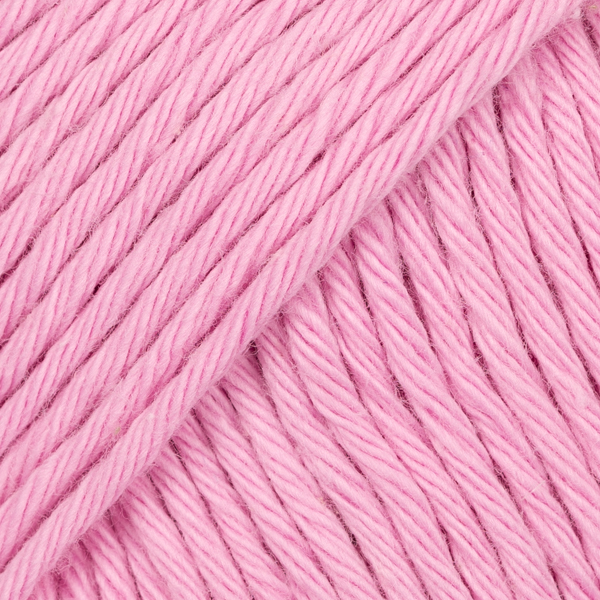


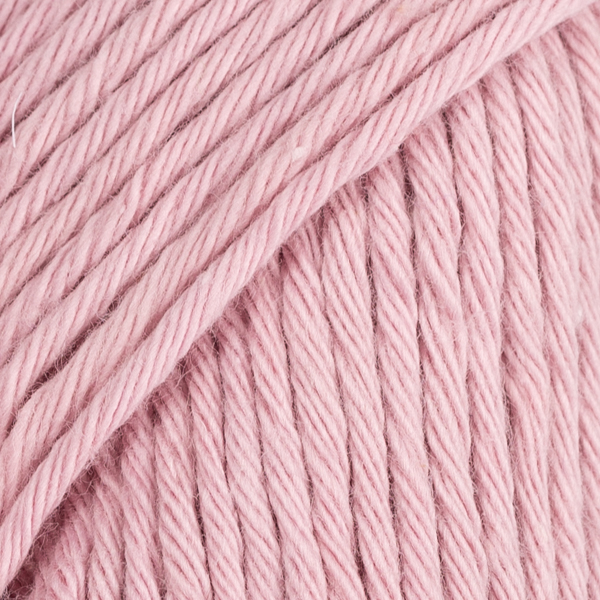

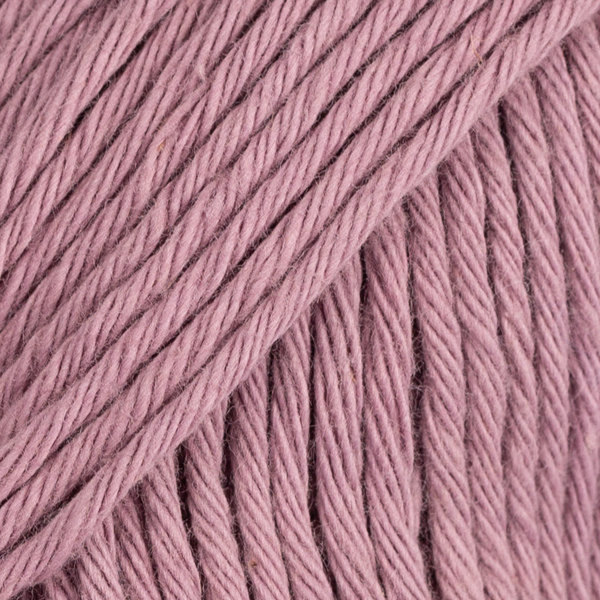


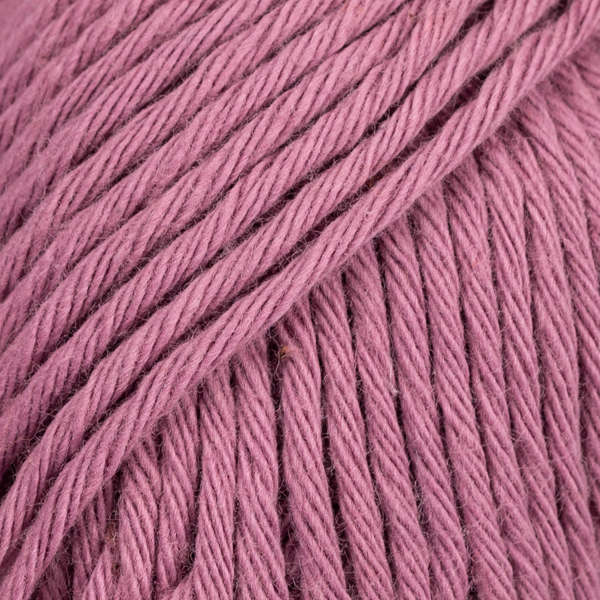

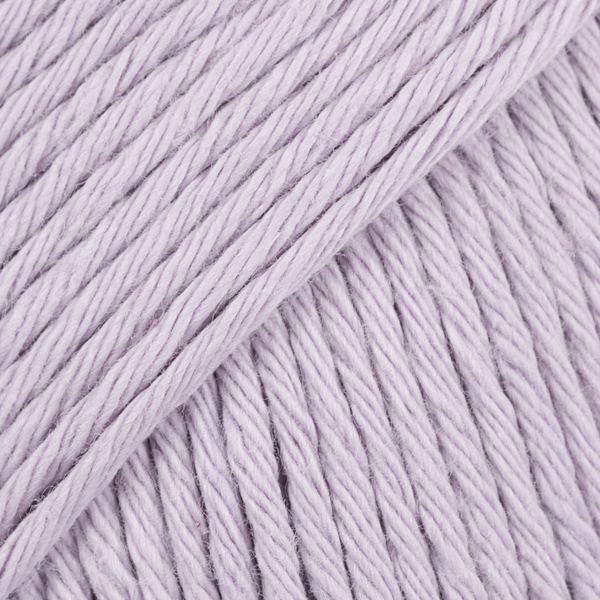

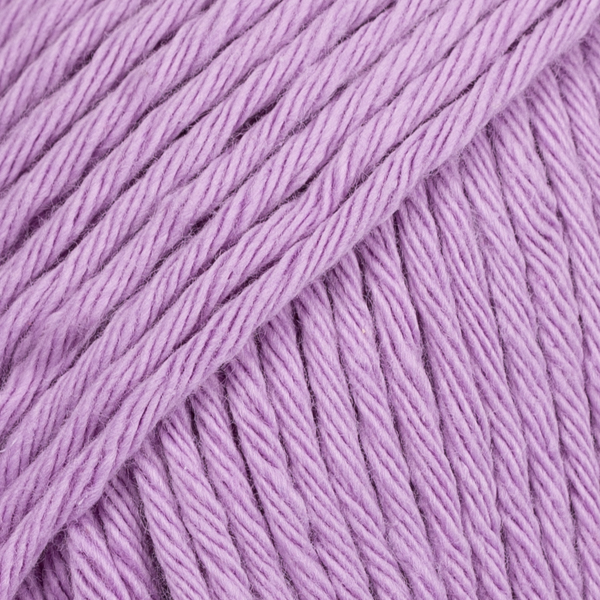







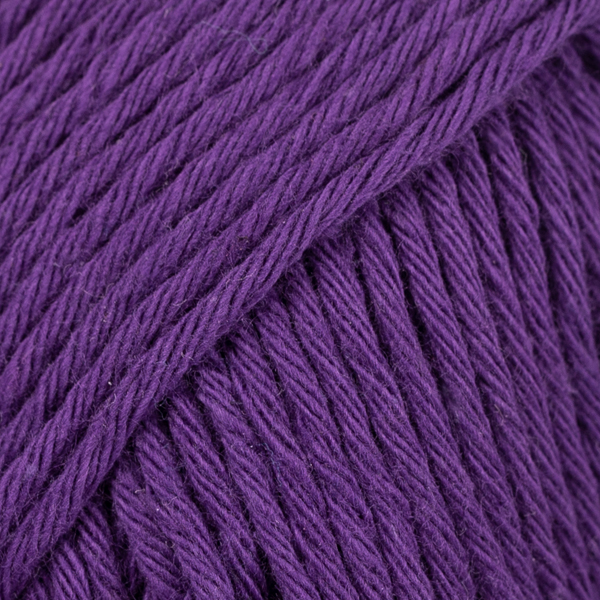
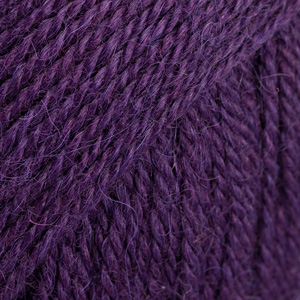





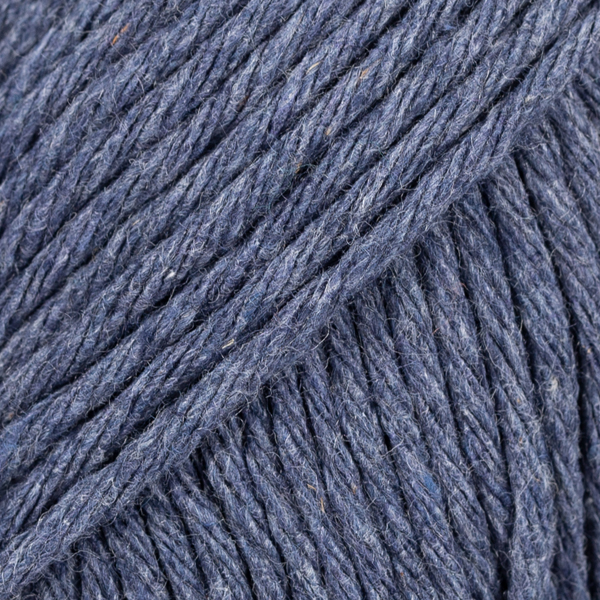

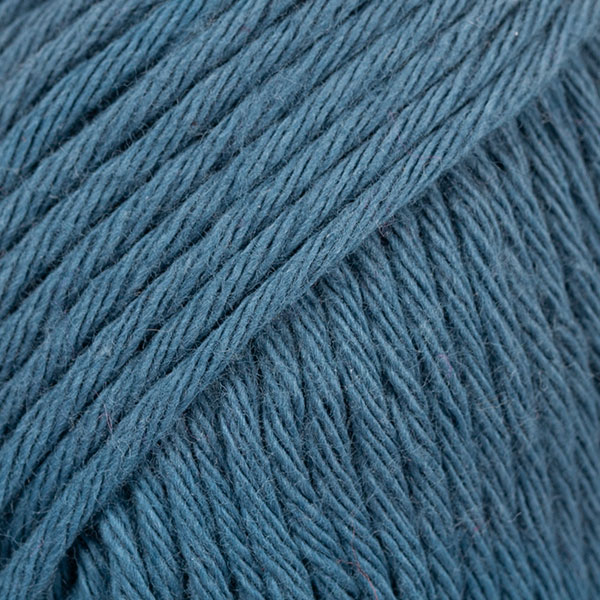





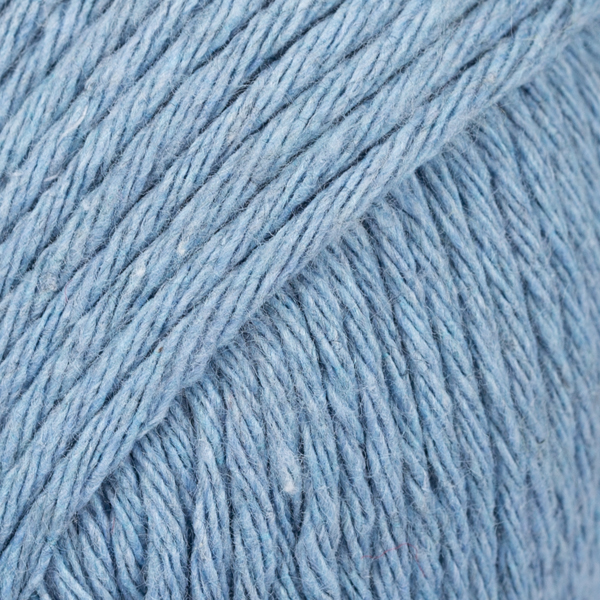


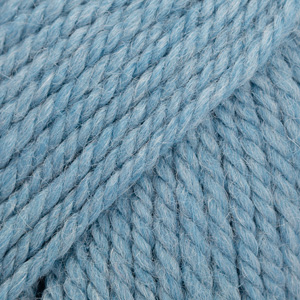



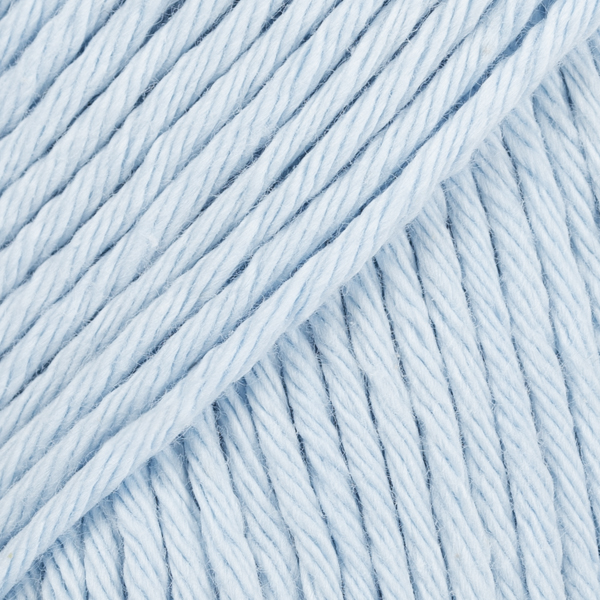








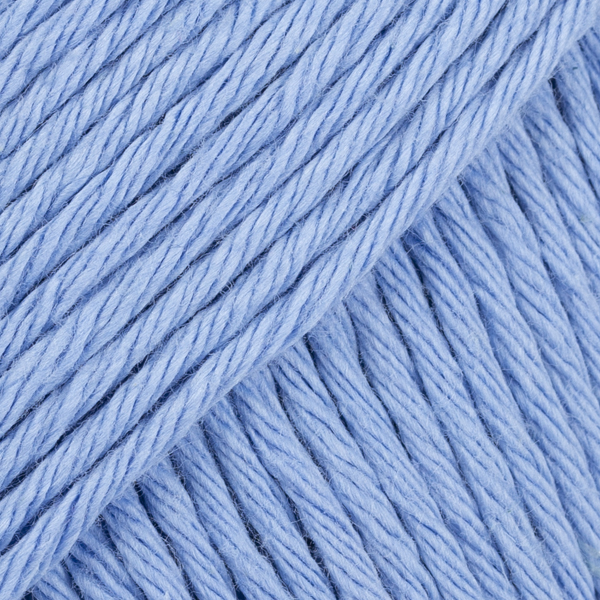


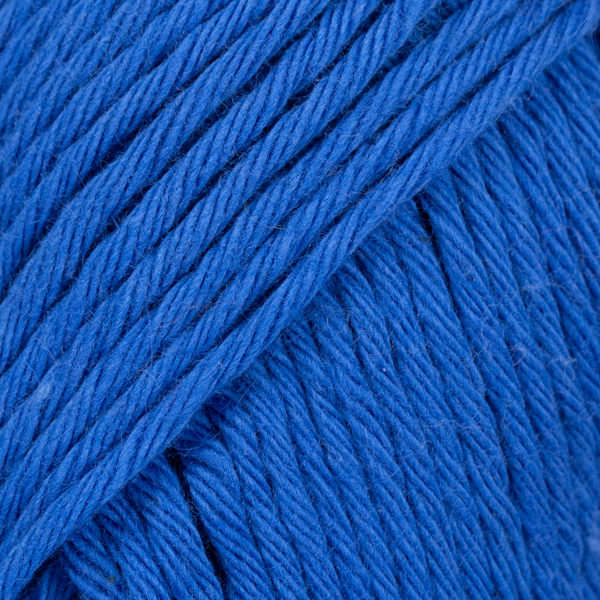













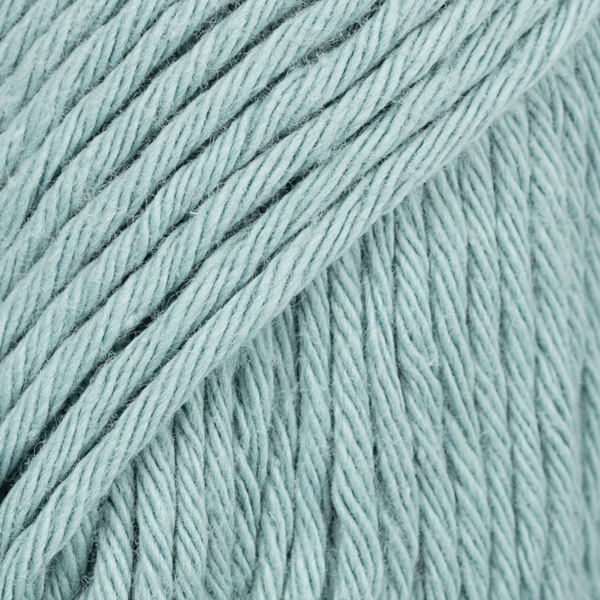



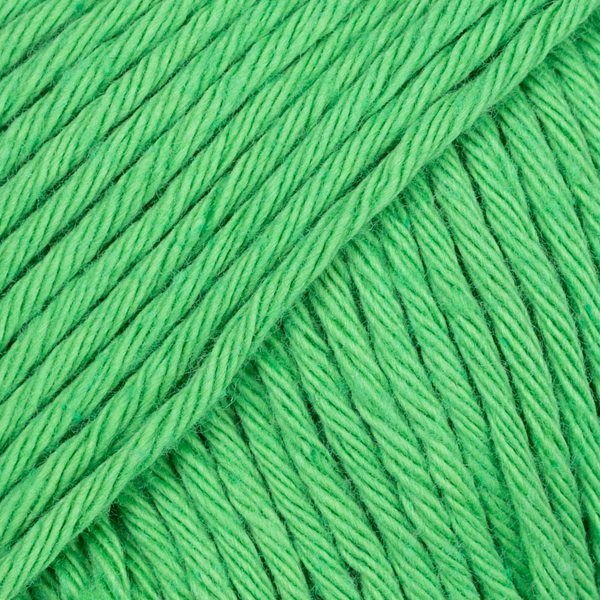













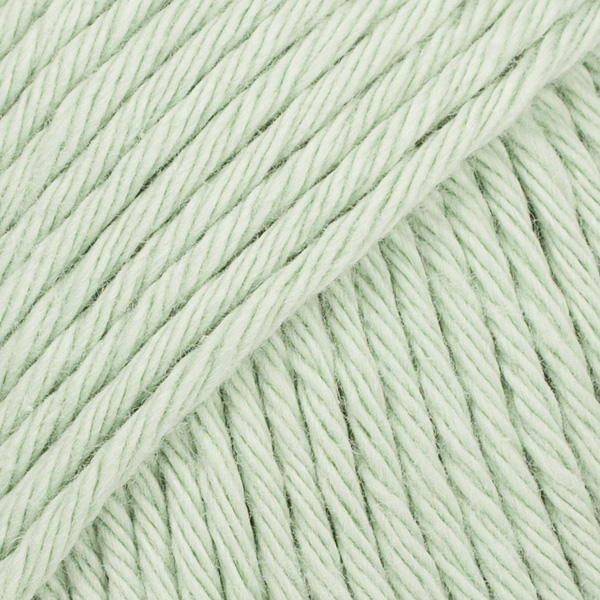

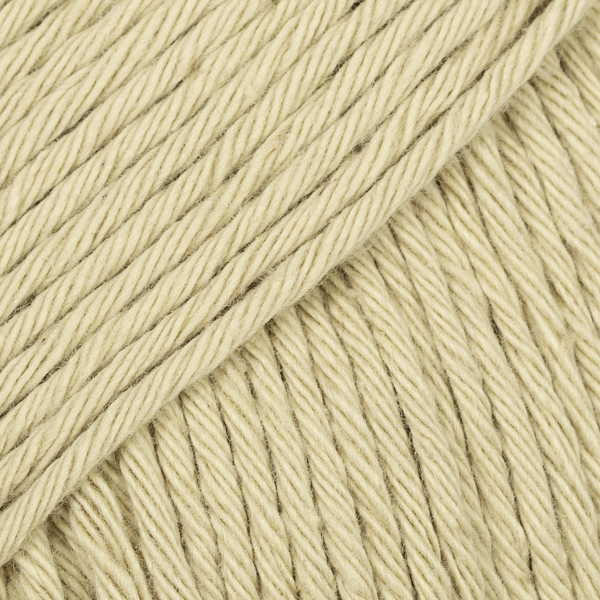



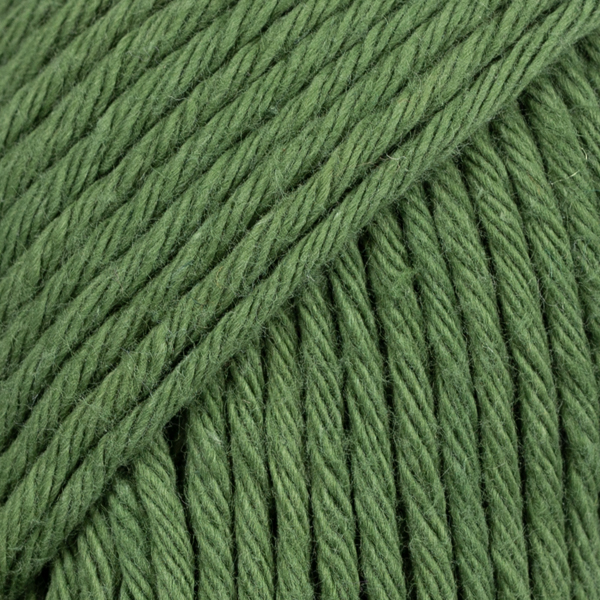
























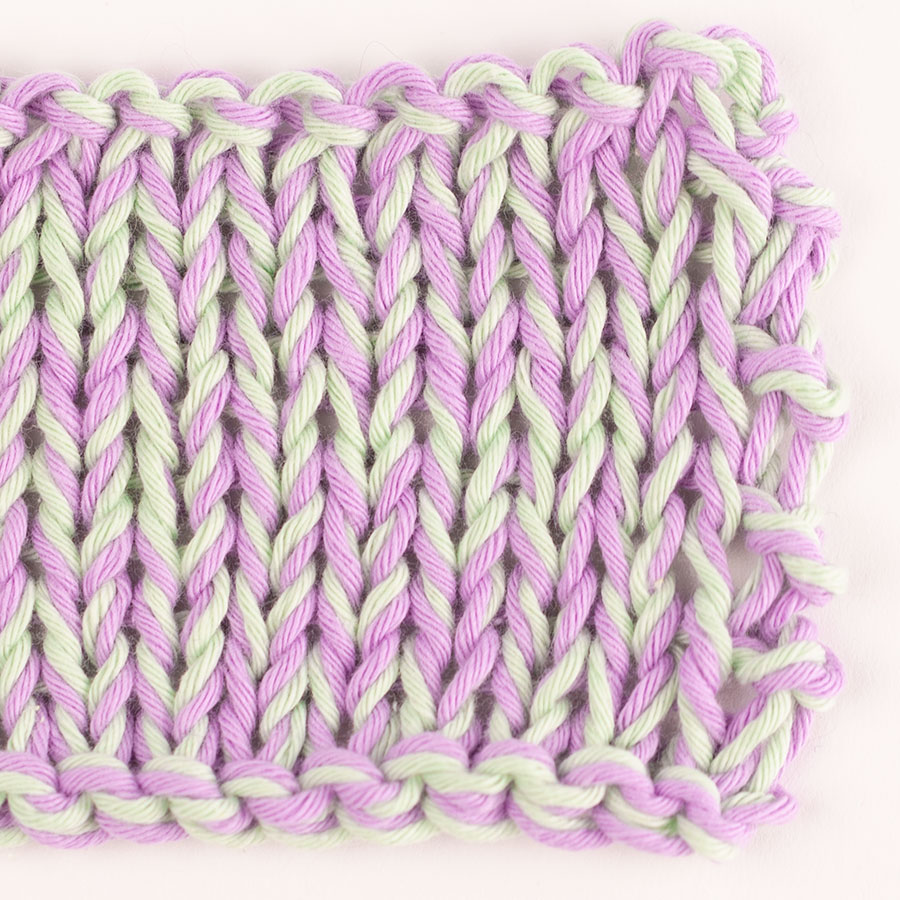
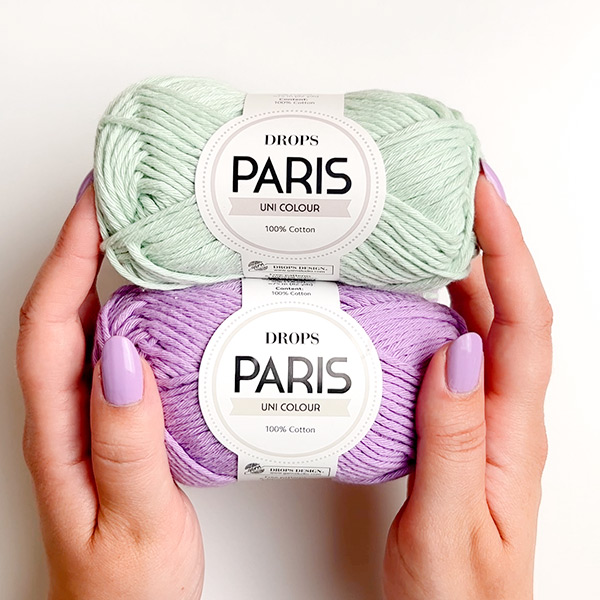
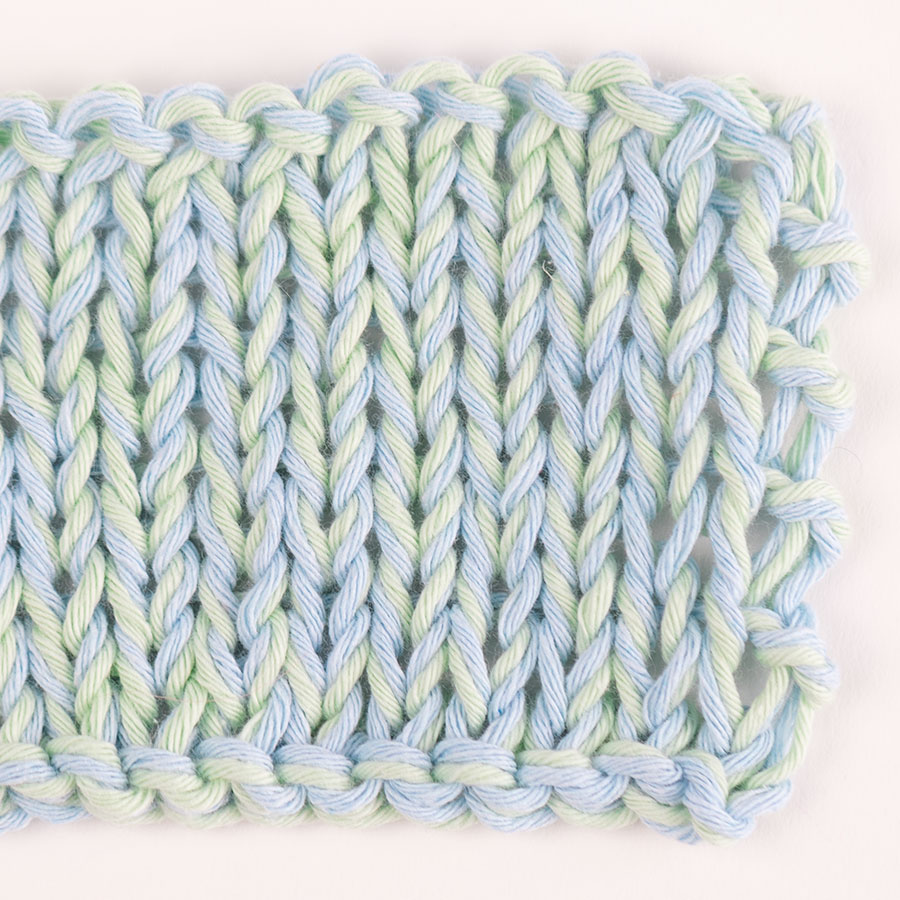
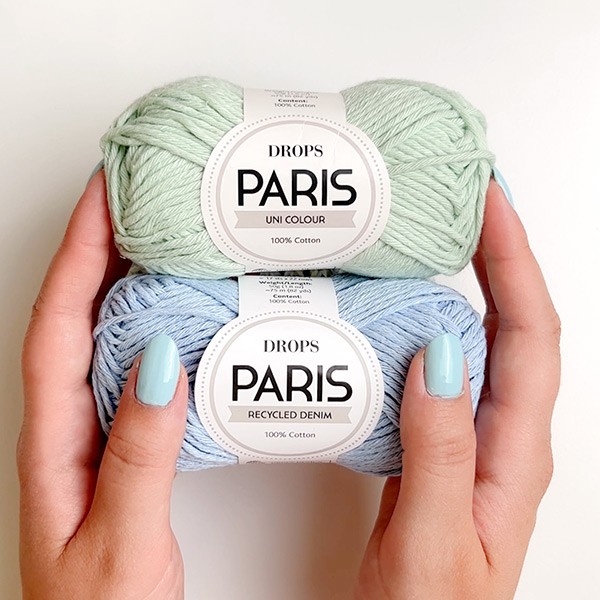
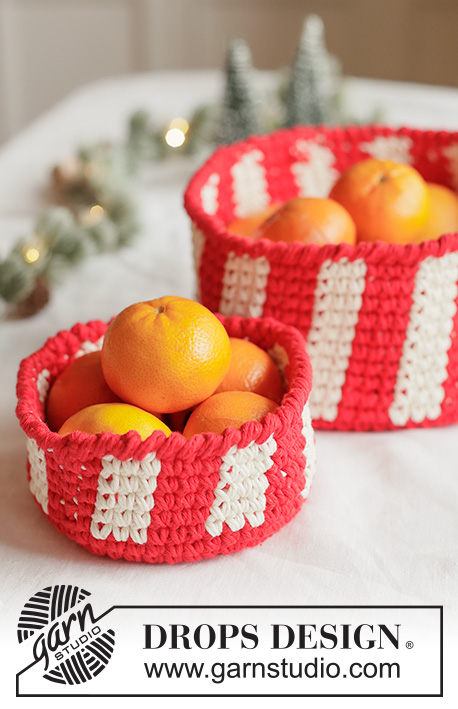
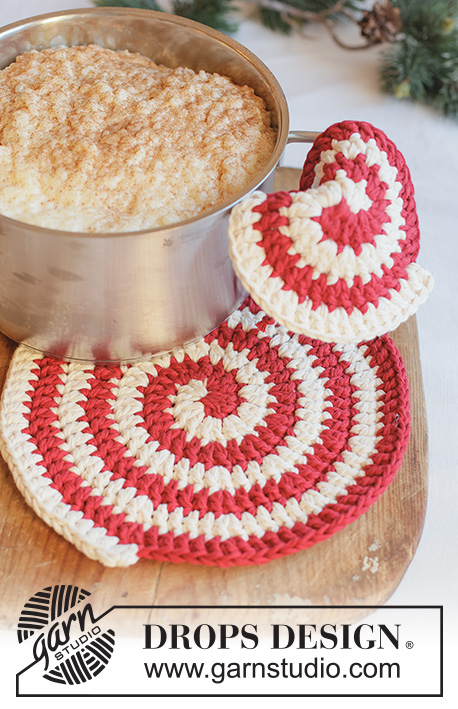






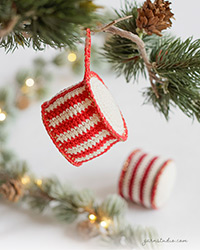





Hei. Jeg strikker kluter i Paris og begynte først med pinne nr 5 som er anbefalt, men syntes det ble altfor løst. Dessuten sttikket jeg så mye feil at jeg måtte rekke opp og starte på nytt. (Jeg strikker i utgangspunktet gansle stramt) Da prøvde jeg med pinne nr 4 i stedet. Det går mye bedre. Ellers liker jeg godt garnet fra Drops 🙂. Har brukt Nepal i tillegg til Paris.
19.05.2018 - 18:01